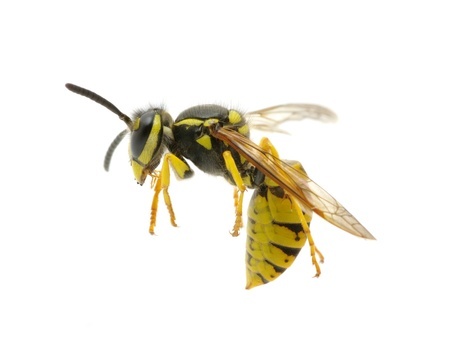Wasps include yellow jackets, hornets, cicada killers, mud daubers, sand wasps, paper wasps and digger wasps, all of which and more can be found in Massachusetts. Each one of these groups is comprised of wasp species of similar appearance and behaviors. For example, yellow jacket species have black and yellow, or black and white striped bodies, and they are relatively aggressive and prone to attack in response to disturbances to their nest. The well known bald-faced hornet is actually a yellow jacket species, not a hornet. All true hornets belong to the Vespa genus, and only one hornet species can be found in the US, and it’s a non-native species commonly known as the giant or European hornet.
The highly aggressive European hornet is between 1 and 1½ inches in length, and they were first introduced into the US during the 19th century when they were brought to the northeast where they remain particularly abundant. Many informational websites, even pest control service and university extension websites, wrongly refer to the bald-faced hornet as a species that is distinct from yellow jackets.
Wasp nests can be located above ground or below the ground in burrows. Most yellow jacket species tend to establish ground nests, but bald-faced hornets, eastern yellow jackets and aerial yellow jackets nest primarily above ground, especially in shrubs, on trees, on structures, in attics, and within wall voids. It is most sensible to avoid rather than remove wasp nests that are located in low-traffic areas, but nests found in vegetation and on structures in residential areas where humans are often present should be removed for safety.
Nests should not be removed by residents who lack pest control licensing or nest removal training, especially those who have an allergy to any arthropod venoms. However, residents who insist on removing nests themselves must do so at least two hours after sundown when wasps are inactive. In order to see, a flashlight with a red filter should be used, as wasps cannot perceive red light well, and nests should be sprayed for 10 seconds or more to ensure absorption. Ground nests should also be sprayed at night, and burrows should be filled with soil and should not be approached for at least one day. Removing indoor wasp nests should always be a professional job, as indoor nesting wasps are prone to swarming in response to treatment.
Have you ever attempted to remove or treat a wasp nest without professional assistance?

